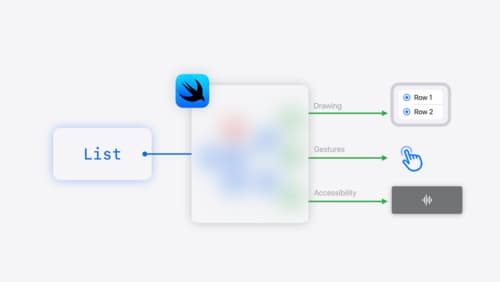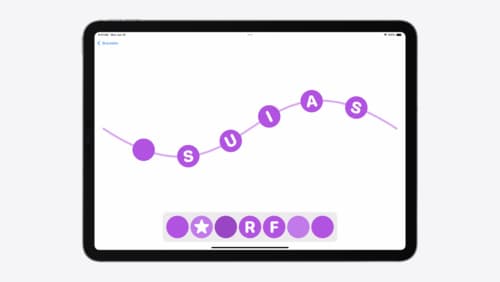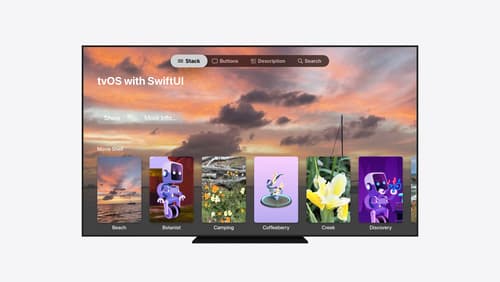How do I do a carrousel in SwiftUI?
Asked on 2024-07-27
1 search
To create a carousel effect in SwiftUI, you can use the scrollTransition modifier to transform a standard collection of elements into a custom scroll view. Here's a brief overview of how you can achieve this:
-
Use a Horizontal Scroll View: Start with a horizontal scroll view containing your items, such as photos.
-
Apply the
scrollTransitionModifier: This modifier allows you to change the rotation and offset of each item based on its position in the scroll view. As you scroll, items on the leading and trailing edges can be rotated to create a circular carousel effect. -
Adjust Rotation and Offset: Use the
valueproperty to determine how far off-screen an item is and apply rotation accordingly. If an item is fully on-screen, theisIdentityproperty will be true.
Here is a simplified example based on the context provided:
import SwiftUI
struct CarouselView: View {
let photos: [String] // Array of photo names
var body: some View {
ScrollView(.horizontal, showsIndicators: false) {
HStack {
ForEach(photos, id: \.self) { photo in
Image(photo)
.resizable()
.scaledToFit()
.frame(width: 200, height: 200)
.scrollTransition { content, phase in
content
.rotation3DEffect(
.degrees(phase.isIdentity ? 0 : -30),
axis: (x: 0, y: 1, z: 0)
)
.offset(x: phase.isIdentity ? 0 : -50)
}
}
}
}
}
}
For more detailed information and examples, you can refer to the session Create custom visual effects with SwiftUI at WWDC 2024. This session covers how to use the scrollTransition modifier to create unique scroll effects, including a carousel.

SwiftUI essentials
Join us on a tour of SwiftUI, Apple’s declarative user interface framework. Learn essential concepts for building apps in SwiftUI, like views, state variables, and layout. Discover the breadth of APIs for building fully featured experiences and crafting unique custom components. Whether you’re brand new to SwiftUI or an experienced developer, you’ll learn how to take advantage of what SwiftUI has to offer when building great apps.

Enhance your UI animations and transitions
Explore how to adopt the zoom transition in navigation and presentations to increase the sense of continuity in your app, and learn how to animate UIKit views with SwiftUI animations to make it easier to build animations that feel continuous.

Migrate your TVML app to SwiftUI
SwiftUI helps you build great apps on all Apple platforms and is the preferred toolkit for bringing your content into the living room with tvOS 18. Learn how to use SwiftUI to create familiar layouts and controls from TVMLKit, and get tips and best practices.
